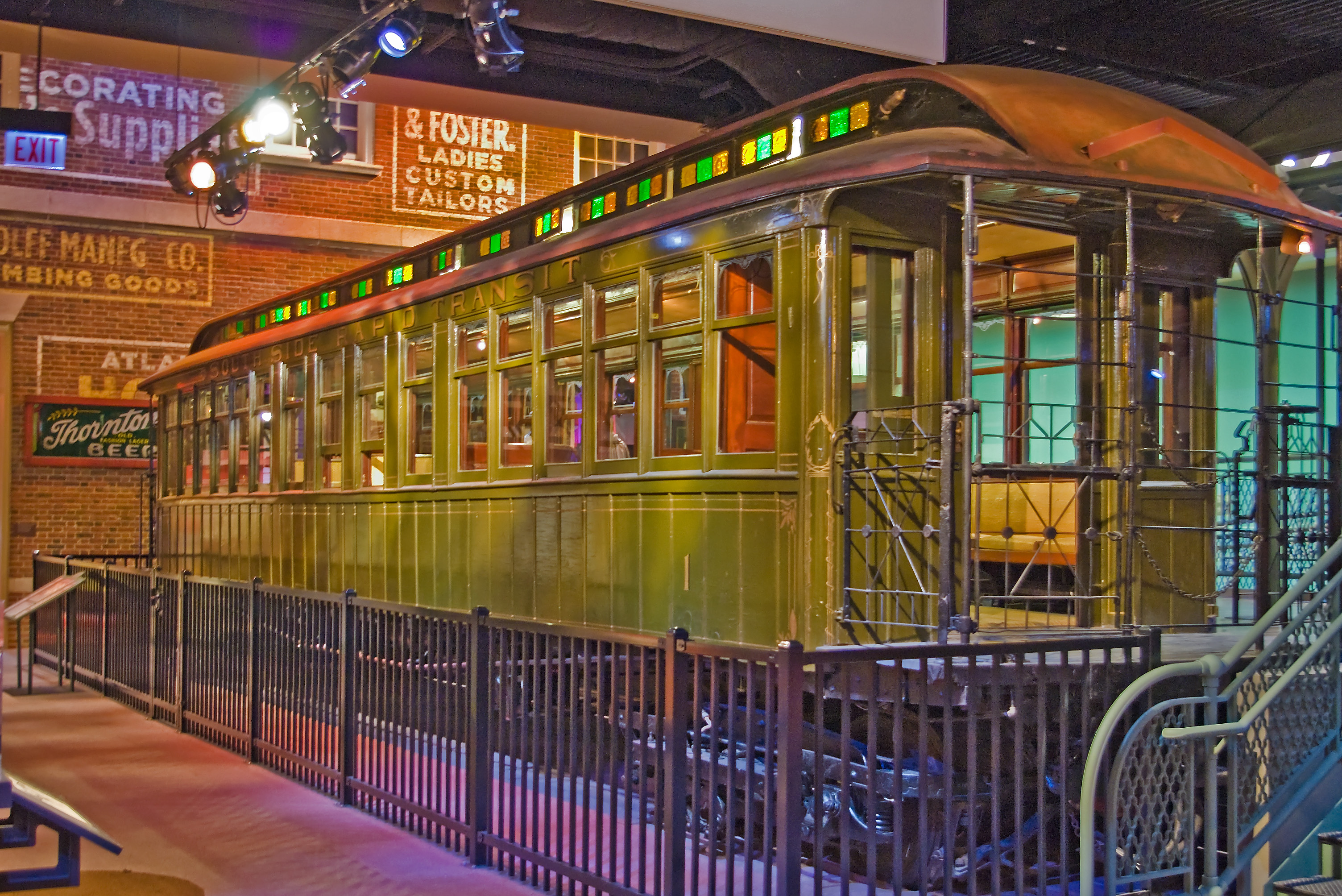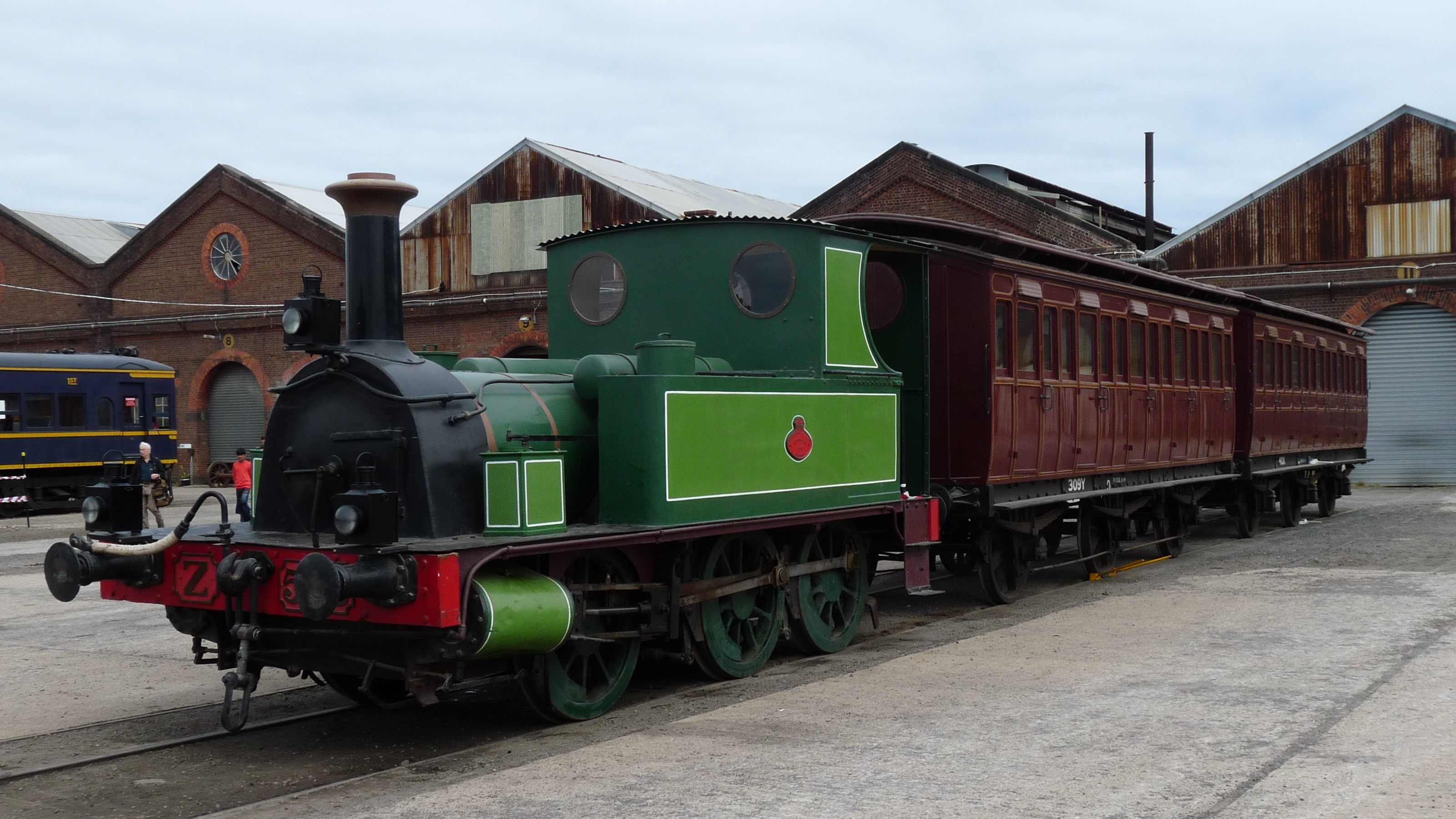|
Victorian Railways E Class (electric)
The Victorian Railways E class is a class of electric locomotive that ran on the Victorian Railways (VR) from 1923 until 1984. Introduced shortly after the electrification of the suburban rail system in Melbourne, Australia, and based on the same electrical and traction equipment as Melbourne's early suburban electric multiple unit fleet, they provided power for suburban goods services and shunting for six decades. History With the rapid expansion of Melbourne's suburban electrification scheme, becoming by 1924 the largest in the world at 346 miles (557 km), the Victorian Railways decided to utilise the advantages of electric traction for suburban goods services, which until then had been hauled by steam locomotives such as the Y class 0-6-0, E class 2-4-2T and later Dde class 4-6-2T. In 1923 it introduced two electric locomotives of 620 hp (460 kW), built at VR's Newport and Jolimont Workshops with the same General Electric traction motors and related electr ... [...More Info...] [...Related Items...] OR: [Wikipedia] [Google] [Baidu] |
Electric
Electricity is the set of physical phenomena associated with the presence and motion of matter possessing an electric charge. Electricity is related to magnetism, both being part of the phenomenon of electromagnetism, as described by Maxwell's equations. Common phenomena are related to electricity, including lightning, static electricity, electric heating, electric discharges and many others. The presence of either a positive or negative electric charge produces an electric field. The motion of electric charges is an electric current and produces a magnetic field. In most applications, Coulomb's law determines the force acting on an electric charge. Electric potential is the Work (physics), work done to move an electric charge from one point to another within an electric field, typically measured in volts. Electricity plays a central role in many modern technologies, serving in electric power where electric current is used to energise equipment, and in electronics dealing w ... [...More Info...] [...Related Items...] OR: [Wikipedia] [Google] [Baidu] |
Electric Multiple Unit
An electric multiple unit or EMU is a multiple-unit train consisting of self-propelled carriages using electricity as the motive power. An EMU requires no separate locomotive, as electric traction motors are incorporated within one or a number of the carriages. An EMU is usually formed of two or more semi-permanently coupled carriages. However, electrically powered single-unit railcars are also generally classed as EMUs. The vast majority of EMUs are passenger trains but versions also exist for carrying mail. EMUs are popular on intercity, commuter, and suburban rail networks around the world due to their fast acceleration and pollution-free operation, and are used on most rapid-transit systems. Being quieter than diesel multiple units (DMUs) and locomotive-hauled trains, EMUs can operate later at night and more frequently without disturbing nearby residents. In addition, tunnel design for EMU trains is simpler as no provision is needed for exhausting fumes, although retrofitting ... [...More Info...] [...Related Items...] OR: [Wikipedia] [Google] [Baidu] |
Tractive Effort
In railway engineering, the term tractive effort describes the pulling or pushing capability of a locomotive. The published tractive force value for any vehicle may be theoretical—that is, calculated from known or implied mechanical properties—or obtained via testing under controlled conditions. The discussion herein covers the term's usage in mechanical applications in which the final stage of the power transmission system is one or more wheels in frictional contact with a railroad track. Defining tractive effort The term ''tractive effort'' is often qualified as ''starting tractive effort'', ''continuous tractive effort'' and ''maximum tractive effort''. These terms apply to different operating conditions, but are related by common mechanical factors: input torque to the driving wheels, the wheel diameter, coefficient of friction () between the driving wheels and supporting surface, and the weight applied to the driving wheels (). The product of and is the ... [...More Info...] [...Related Items...] OR: [Wikipedia] [Google] [Baidu] |
Multiple-unit Train Control
Multiple-unit train control, sometimes abbreviated to multiple-unit or MU, is a method of simultaneously controlling all the traction equipment in a train from a single location—whether it is a multiple unit comprising a number of self-powered passenger cars or a set of locomotives—with only a control signal transmitted to each unit. This contrasts with arrangements where electric motors in different units are connected directly to the power supply switched by a single control mechanism, thus requiring the full traction power to be transmitted through the train. A set of vehicles under multiple unit control is referred to as a consist in the United States. Origins Multiple unit train control was first used in electric multiple units in the 1890s. The Liverpool Overhead Railway The Liverpool Overhead Railway opened in 1893 with two-car electric multiple units, controllers in cabs at both ends directly controlling the traction current to motors on both cars. Frank J. Sprag ... [...More Info...] [...Related Items...] OR: [Wikipedia] [Google] [Baidu] |
Victorian Railways L Class
The Victorian Railways L class is a class of electric locomotives built by English Electric and operated by the Victorian Railways and later V/Line from 1953 until 1987 primarily on the Gippsland line. They were the only class of main line electric locomotive operated in Victoria. History Australia was a relatively early adopter of electric traction and Electric Multiple Unit trains, with a General Electric advertisement in ''Railway Age'' magazine of 1924 claiming that Melbourne had the largest suburban electrification scheme in the world at 346 miles (557 km). However, electrification in Victoria had until the 1950s been restricted to the Melbourne suburban network. Apart from the EMU fleet the only electric locomotives operated by the Victorian Railways (VR) were a fleet of 12 small 620 hp (460 kW) types (two steeple cabs 1100 and 1101 plus ten box cabs 1102 to 1111). In the 1960s the latter became classified E class. They were all built in the 1920s at VR's ... [...More Info...] [...Related Items...] OR: [Wikipedia] [Google] [Baidu] |
Electric Chair
The electric chair is a specialized device used for capital punishment through electrocution. The condemned is strapped to a custom wooden chair and electrocuted via electrodes attached to the head and leg. Alfred P. Southwick, a Buffalo, New York dentist, conceived this execution method in 1881. It was developed over the next decade as a more humane alternative to conventional executions, particularly hanging. First used in 1890, the electric chair became a symbol of capital punishment in the United States. The electric chair was also used extensively in the Philippines. It was initially thought to cause death through cerebral damage, but it was scientifically established in 1899 that death primarily results from ventricular fibrillation and cardiac arrest. Despite its historical significance in American capital punishment, electric chair use has declined with the adoption of lethal injection which was perceived as more humane. While some states retain electrocution as a legal ... [...More Info...] [...Related Items...] OR: [Wikipedia] [Google] [Baidu] |
4-6-2
Under the Whyte notation for the classification of steam locomotives, represents the wheel arrangement of four leading wheels on two axles, six powered and coupled driving wheels on three axles and two trailing wheels on one axle. The locomotive became almost globally known as a Pacific type after a locomotive built by the Baldwin Locomotive Works in Philadelphia was shipped across the Pacific Ocean to New Zealand. Overview The introduction of the design in 1901 has been described as "a veritable milestone in locomotive progress". On many railways worldwide, Pacific steam locomotives provided the motive power for express passenger trains throughout much of the early to mid-20th century, before either being superseded by larger types in the late 1940s and 1950s, or replaced by electric or diesel-electric locomotives during the 1950s and 1960s. Nevertheless, new Pacific designs continued to be built until the mid-1950s. The type is generally considered to be an enlargement o ... [...More Info...] [...Related Items...] OR: [Wikipedia] [Google] [Baidu] |
Victorian Railways Dd Class
The DD class (later reclassified into D1, D2 and D3 subclasses) was a passenger and mixed traffic steam locomotive that ran on Victorian Railways from 1902 to 1974. Originally introduced on mainline express passenger services, they were quickly superseded by the much larger A2 class and were relegated to secondary and branch line passenger and goods service, where they gave excellent service for the next fifty years. The DD design was adapted into a 4-6-2T tank locomotive for suburban passenger use, the DDE (later D4) class. They were the most numerous locomotive class on the VR, with a total of 261 DD and 58 \mathrm locomotives built. History By 1900, Victoria's express passenger locomotive fleet was almost exclusively made up of 4-4-0 designs of the Old A, New A, and the most recent AA class. These locomotives reflected contemporary British locomotive practice (as did the VR's fleet of 0-6-0 goods locomotives), in no small part due to the Victorian Government having app ... [...More Info...] [...Related Items...] OR: [Wikipedia] [Google] [Baidu] |
2-4-2
Under the Whyte notation for the classification of steam locomotives, represents the wheel arrangement of two leading wheels on one axle, four powered and coupled driving wheels on two axles and two trailing wheels on one axle. The type is sometimes named Columbia after a Baldwin Locomotive Works, Baldwin locomotive was showcased at the 1893 World's Columbian Exposition held at Chicago, Illinois. Overview The wheel arrangement was widely used on passenger tank locomotives during the last three decades of the nineteenth and the first decade of the twentieth centuries. The vast majority of 2-4-2 locomotives were Tank locomotive, tank engines, designated 2-4-2T. The symmetrical wheel arrangement was well suited for a tank locomotive that is used to work in either direction. When the leading and trailing wheels are in swivelling trucks, the equivalent UIC classification is 1'B1'. While a number of 2-4-2 tender locomotives were built, larger tender locomotive types soon became do ... [...More Info...] [...Related Items...] OR: [Wikipedia] [Google] [Baidu] |
Victorian Railways E Class
The E class is a class of suburban tank steam locomotive that ran on Australia's Victorian Railways (VR). History During the late 19th century, Victorian Railways had ended up with a mixed fleet of locomotives of various designs, which had caused maintenance difficulties. To solve this, Richard Speight, a VR commissioner who had worked for the Midland Railway, set out a program to adopt standardized locomotive designs based on British practices. Tasked with designing locomotives for the scheme was Edward Alexander Jeffreys, who designed 5 classes of locomotive for Victorian Railways, all using standard parts. These would become the D class and New A class 4-4-0s, the New R class and Y class 0-6-0s, and the E class 2-4-2T. After the design for Jeffreys' 2-4-2T design was finalised by VR, a contract was awarded to the Phoenix Foundry of Ballarat for construction of 45 locomotives, while an example was built by Kitson & Co of Leeds in 1888 for the Melbourne Centenni ... [...More Info...] [...Related Items...] OR: [Wikipedia] [Google] [Baidu] |
0-6-0
is the Whyte notation designation for steam locomotives with a wheel arrangement of no leading wheels, six powered and coupled driving wheels on three axles, and no trailing wheels. Historically, this was the most common wheel arrangement used on both Tender (rail), tender and tank locomotives in versions with both Cylinder (locomotive), inside and outside cylinders. In the United Kingdom, the Whyte notation of wheel arrangement was also often used for the classification of electric and diesel-electric locomotives with side-rod coupled driving wheels. Under the UIC classification, popular in Europe, this wheel arrangement is written as C if the wheels are coupled with rods or gears, or Co if they are independently driven, the latter usually being electric and diesel-electric locomotives. Overview History The 0-6-0 configuration was the most widely used wheel arrangement for both Tender (rail), tender and tank locomotive, tank steam locomotives. The type was also widely used fo ... [...More Info...] [...Related Items...] OR: [Wikipedia] [Google] [Baidu] |







